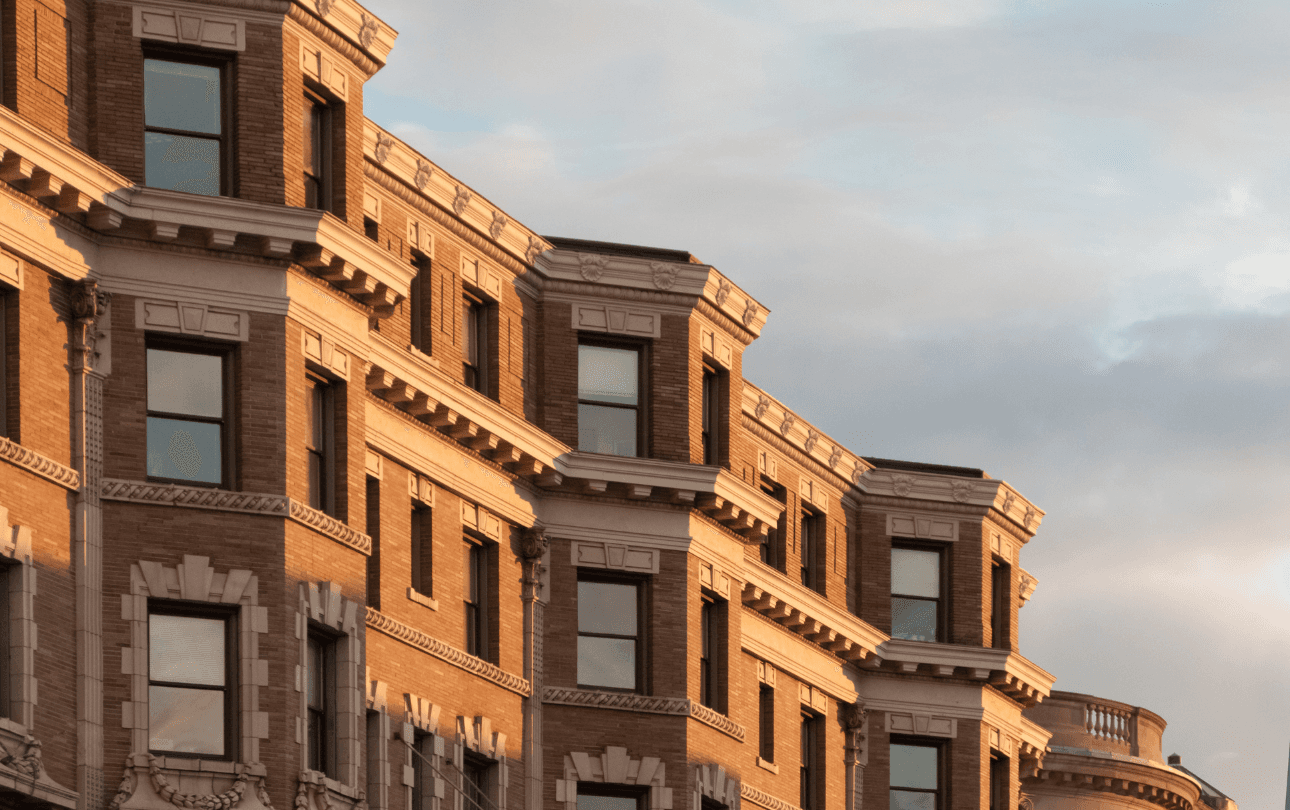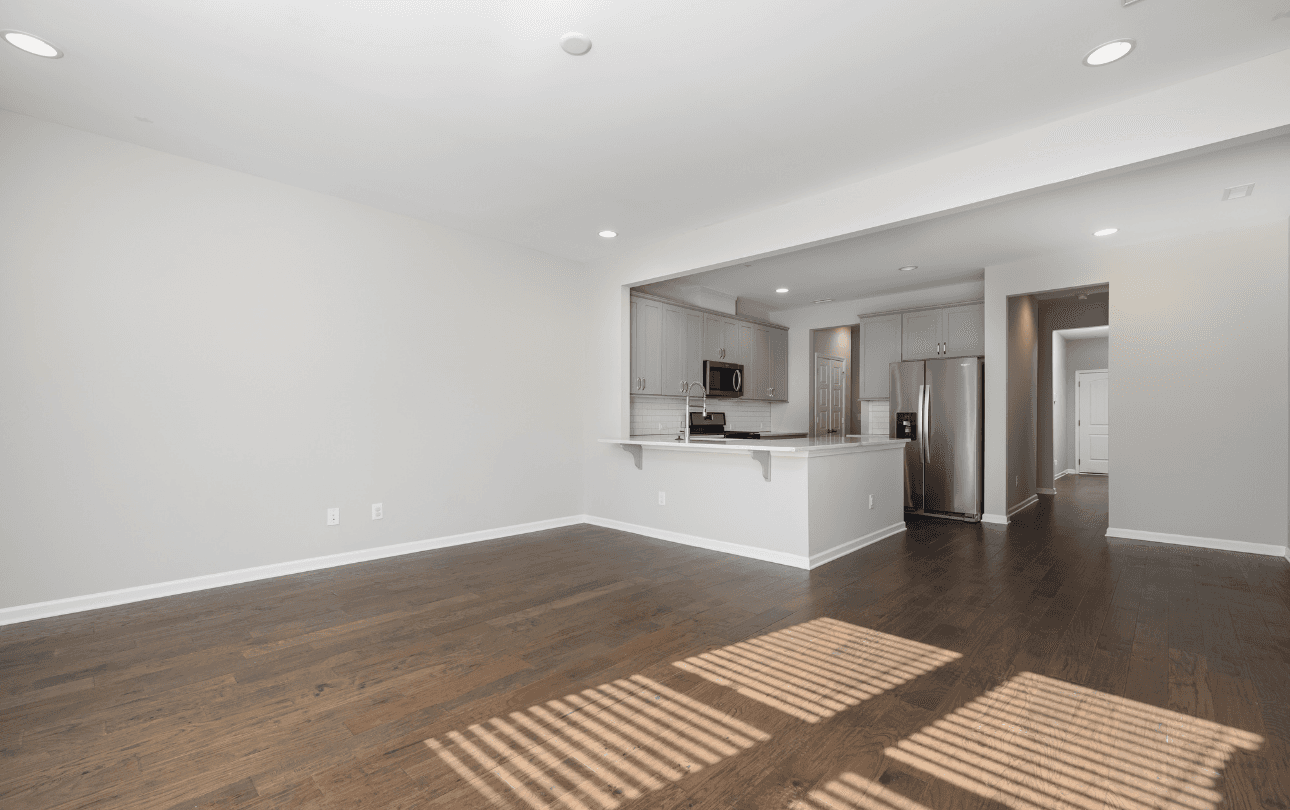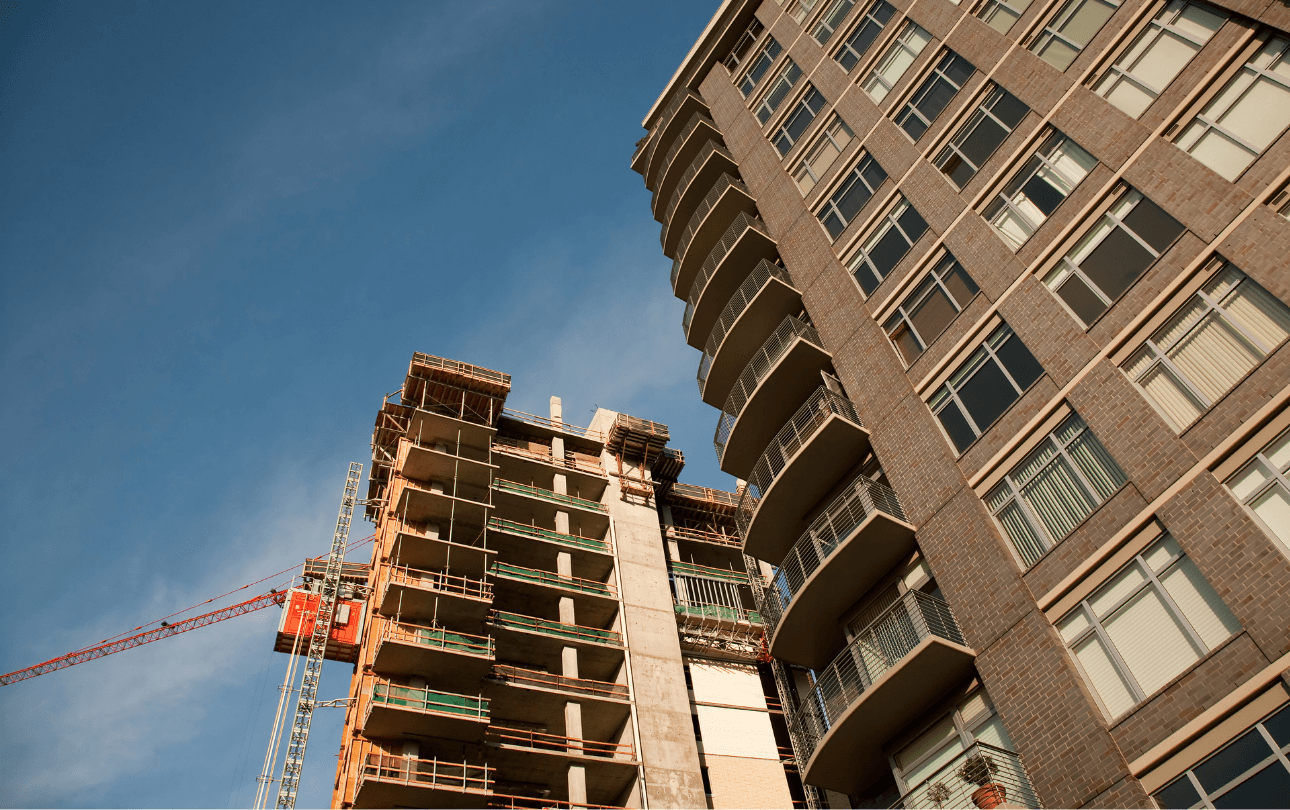Introducing a new property is exciting as your vision for a vibrant community finally comes to fruition. In 2024, the multifamily industry saw its highest level of new supply since the 1980s, with approximately 600,000 delivered. Although projections for 2025 suggest a decrease to approximately 500,000 units, this number still suppresses pre-pandemic figures*. Drawing on data from the Census Bureau's Survey of Construction, the journey from obtaining construction authorization to completing a multifamily building averages just under 20 months. This means you've spent a long time bringing this project to life. As you near the end of construction, it's time to focus on filling those spaces and truly bringing the community to life. With the supply of new units still high, the competition to attract residents remains strong.
A fast, efficient lease-up is the key to achieving a sustainable stream of income and setting yourself up for future stability. Yet you also want to make sure that you’re not taking on undue risk as you aim for full occupancy. As you launch a new property, it's essential to deploy a strategic approach that takes into account the needs and preferences of your clientele, while maximizing your property value and managing your own risk. This playbook will walk you through common challenges property owners and operators face, and strategies to create more efficient lease-ups, the foundation of a strong and profitable property.
Chapter 1 - Challenges to a successful lease-up
It’s important to be aware of the challenges you may face throughout the lease-up process. Here are the key ones:
Marketing matters
Building a community from scratch is an exciting opportunity, but it presents a marketing puzzle. That’s because potential residents don’t have a frame of reference for the experience of living at the property – they can’t talk to current residents, read reviews of the community, or begin to build bonds with their future neighbors.
Costs concerns
Until you are generating steady revenue, it can be difficult to cover fixed costs, such as loans and taxes, in addition to fluctuating costs, like staffing and marketing.
Time pressures
Cost and time are closely tied together. It’s a race against the clock when trying to find new residents. For every month that rental income isn’t being collected, the expenses (and debts) add up. That’s why achieving positive cash flow is absolutely critical.
Staffing needs
Training new building staff can be time consuming, and maintaining an attractive compensation package can be daunting before the property has reached stabilization.
Construction delays
Though the property may be ready to welcome new residents, construction might not be completely finished. Whether workers are still wrapping up small tasks, like painting and electrical wiring, or major ones such as completing additional facilities, property managers will have to work around this when giving tours and guiding residents through the move-in process. A delayed Temporary Certificate of Occupancy (TCO) can slow down leasing if parts of the community are off-limits.
Fortunately, just being aware of these obstacles can allow you to proactively manage them. Read on to discover how to tackle these challenges for a smoother, more successful lease-up.
Chapter 2 - Your lease-up marketing plan
Extensive, creative marketing efforts are your top ally in reaching your target audience and capturing their attention – and their rent money. Here are the activities to consider during each phase of your marketing efforts.
Phase 1: Pre-launch (6 - 12+ months before opening)
This is when you will lay the groundwork so you can move full-speed ahead when the property opens for tours. You can start planning these strategies at any point – the sooner you start raising awareness, the more demand you’ll build.
1. Determine your target market and create your ideal resident persona.
As you consider your first marketing steps, you want to hone in on who you believe the property is best suited for so you are better able to get information to them. Young professionals? New families? Affluent empty nesters? While your community is likely to have a mix of demographics and personas, identifying priority segments will help you know where and how to focus your efforts.
2. Develop property branding and messaging.
With your target audience identified, it’s easier to create branding that reflects what your community offers. As you begin to build your marketing materials, one powerful strategy is to use the word “home” in your messaging. Help residents get excited about the concept of coming to their new “home” through messaging and images that help them envision an inviting community that’s just right for them.
3. Build a website for the property.
Most new residents will start their search online so you need to have a strong presence with a robust website that’s easy to navigate and mobile-friendly. Be sure to use professional photography and copywriting services so it really shines.
Among the elements you should include:
Schematic of the property showing the footprint
Layouts of each floor plan to answer initial questions about size and configurations
Details on all the amenities to really highlight what makes your property special
Brief biographies of your leasing team – help prospective residents feel welcome before they even visit
A guide to local restaurants, retail, wellness options and other nearby services, highlighting those that offer resident discount
Video tours so they can begin to get a feel for the layout and amenities
Chatbot that uses I to assist you with responses to the most commonly asked questions 24/7
4. Develop a digital media marketing plan.
Your website is just one component of a comprehensive online presence. Here are some other steps you can take:
Create accounts on relevant social media channels and begin posting “behind-the scenes” content to showcase your special features and establish your brand personality.
Connect with neighborhood businesses to establish yourself as an integral part of your local community.
Comment on and share their posts and encourage them to reciprocate.
Register on Google Maps and other relevant directory sites.
Consider purchasing advertising on the platforms where your key target congregates to drive awareness of the property.
5. Create marketing collateral, such as flyers, brochures, videos, and out-of-home billboards.
You’ll want to have these on hand when prospects come by, as well as available at other key spots throughout the community.
Now is also the time to create banners and signs or the outside of your building with a “Coming Soon” message and a QR code or other contact information or easy access to sign up and join the VIP list. And consider adding out-of-home channels, such as billboards, bus benches, and other opportunities in high-traffic areas.
6. Create a VIP list of contacts.
Make these early entries feel special by emailing them regularly to help build anticipation or tours and events. Your list could include:
Prospective residents who reach out early
Local real estate agents
Other local tastemakers
Top employers in the area
7. Create a Preferred Employer Program (PEP)
Local businesses can be an ongoing source of referrals. Prepare a discount or waived app fee program for their employees and coordinate a meeting with the HR department to discuss how you can partner with them to communicate the offer.
Phase 2: Launch (1 - 2 months before opening)
Now is the time to set those plans in motion to attract attention as you get ready or tours:
Launch website and social media profiles
Host an open house event or local real estate agents and influencers
Create and distribute a press release to local media outlets. Highlight special amenities and invite writers for a tour
Place advertisements in local newspapers or community magazines
Attend local community events and distribute flyers and brochures
Host your own community-focused event and invite local vendors and artists to connect with the neighborhood
Support local businesses when hosting open houses for prospective residents
Restaurants can provide food and drinks
Retailers can offer raffle items
Other local businesses can have a presence to meet their future customers
Continue to post regularly to build your social media influence
Get creative with marketing tie-ins and incentives. Partner with local businesses to offer move-in specials or discounts; or talk to a moving company about offering flat-rate services
Finalize your tour strategy
Develop a weekly cadence to stay in touch with your prospects
Test your inbound lead auto-response; make sure it’s professional and inviting to build anticipation and make your earliest prospects feel elite.
Phase 3: Post-launch (ongoing)
While you’ll be busy hosting tours and working with prospective residents, you can never let your marketing languish. Here are the activities you should priorities on an ongoing basis:
Continue to post on social media and update the website with new photos and videos
Attend local events and sponsor community activities
Follow up with leads
Provide exceptional customer service to current residents to help build affinity
Offer referral incentives to current residents
Monitor online reviews and address any concerns promptly
Adjust marketing strategies based on rental trends and market demand. Be flexible – at each leasing benchmark (25%, 50% and so on) be ready to revise your strategy to cast a wider net to reach more of your target demographic
Constantly assess what you might need to do at any juncture to bring in the qualified prospects that will make your lease-up a success
Chapter 3 - Your guide to lease-up costs
You probably already have a handle on your fixed costs, including your loan payments, taxes and insurance. Here are some other costs you should budget for, based on the size of your community, your location and other factors.
Marketing and advertising
This might be your most significant cost, but one that should be considered an investment. After all, cash flow is everything and you need to get your building filled as quickly and efficiently as possible. This line item needs to be flexible, as marketing costs may need to increase if traffic is not as expected – for example, you might need to add events or increase your digital spend. Or if you end up filling your property ahead of projections, this money can be redeployed in other ways.
Maintenance and repairs
Fortunately, maintenance expenses are typically extremely low for a lease-up, given that with new construction, everything is covered under warranty and you won’t have to shell out for preventive maintenance. If marketing is your largest cost, maintenance is the lowest.
Renter screening
Conducting background checks is vital to ensure your residents will pay in a timely manner. Talk to us about how TheGuarantors’ industry-leading insurance products can help you convert residents with more confidence and less risk.
Staffing
Your property is likely to be partially staffed at lease-up. While there may not be a manager yet on-site, ensure you have enthusiastic salespeople on hand to lead tours, answer questions and hype up the property. Lease-up staff is highly compensated with bonuses for meeting benchmarks. For every 100 units, plan on one staff member for the front of the house (leasing) and one staff member for the back of the house (maintenance).
Unforeseen circumstances
Build in a cushion so you can cover costs that might arise as conditions change – for example, you may need to host an extra open house, invest in additional marketing or add staff.
Chapter 4 - The role of tours in a lease-up strategy
No matter how engaging your website, social media, collateral and other marketing activities are, nothing replaces the importance of getting your ideal client on-site to experience your community. A top-notch tour strategy is essential to closing the sale.
Here are some factors to consider:
Develop an “Early Access” program where you invite a select group of prospects for an exclusive tour. Hype up the concept that they can be inaugural residents
Create the ideal tour path. Make sure it showcases the best areas of the building, the most appealing amenities and other aspects that differentiate you in the market. Avoid unfinished or unsafe areas
Stage and furnish a unit to create a welcoming vibe and allow visitors to envision themselves living their best life there
Make sure your amenities are ready to shine; i.e. that the gym is stocked with new machines and weights and the pool area boasts lounge chairs, towels, and other accessories that show it is “move-in ready”
Create group tours, which can build excitement as they listen to their potential neighbors ask questions and show interest. It helps build buzz (and a healthy sense of “FOMO”).
Create a sense of urgency by showing a limited number of apartments as available. As certain lines rent up or lag the others, readjust the tour to keep an even mix
Work with your staff to ensure they are well versed on all aspects of the property so they can answer questions and project enthusiasm
If you’re conducting hard hat tours on an active construction site, create waivers for prospective renters to sign
Offer an easy and efficient way to schedule tours, such as AI tools like EliseAI or Respage which help with appointment scheduling
Encourage visitors to stick around after the tour to ask more questions and allow your staff to make personal connections
Capture all pertinent information so you can follow up with each guest
Chapter 5 - At TheGuarantors, we are experts in helping owners maximize property value with more successful lease-ups by driving lease-up velocity and stabilizing properties faster.
How do we do that?
Our insurance products are unique in that the renter pays for a policy that helps qualify them for an apartment, and the policy also benefits the owner/operator by protecting them from default, damages, vacancy, holdovers, lease breaks and more. We can help keep cash flow strong and get a step ahead of bad debt because you’ll know that every lease is insured against default up to the full lease term.
Therefore, we help owners and operators broaden their applicant pool to bring in non-traditional renters – such as recent graduates, self-employed workers, non-U.S. citizens, students, thin-credit applicants and applicants who lack a Social Security number or verifiable income, and/or with those with lower FICO scores – without the typical risk associated with doing so. That’s because TheGuarantors takes on the risk at no cost to the owner/operator.
Here’s how we can help expedite your lease-up and benefit your renters, too:
TheGuarantors’ Rent Coverage allows a renter to qualify for a unit they may not otherwise qualify for using a property’s standard application requirements. Owners/operators attract more residents, strengthen their bottom line, and eliminate risks
TheGuarantors’ Deposit Coverage allows a renter to pay a smaller fee in lieu of a large traditional security deposit, leaving them with more cash in their pocket at move-in, while giving the owner/operator the protection they want and need against damages that may occur
Because you can market yourself as a “deposit free community,” these products can help broaden your pool of potential renters. We can provide the collateral you need to get your message across
By converting more prospective renters while mitigating rental income loss, you can reach your lease-up goals more quickly and with a strong level of protection
Talk to us today about how you can include TheGuarantors in your advertising and signage, with additional explanatory collateral available in all introductory and leasing materials. Let renters know the benefits to them, while you enjoy knowing we have your back.
Are you ready for a successful lease-up?
As you prepare to launch a property, keep in mind these vital activities to consider and plan for a successful lease-up:
Casting a wide net with a comprehensive marketing strategy
Responding to inquiries with speed and professionalism
Deploying technology to schedule and process leads
Remember you’ll need to be flexible and ready to pivot as conditions change or something doesn’t go as expected.
Contact TheGuarantors today by visiting www.theguarantors.com or contacting us at bizdev@theguarantors.com for more information about how we can help open the door to a more successful lease-up and a more profitable ongoing rental operation.
*RealPage Multifamily Forecast; Jan 2025
*Apartments.com State of the U.S. Multifamily Market; Jan 2024
California Notice: Guarantors Insurance Agency's lease guarantee and security deposit replacement bonds may be offered as surplus line insurance products not licensed in the state. All non-admitted products are duly reported to California Surplus Line Association in accordance with California law.



